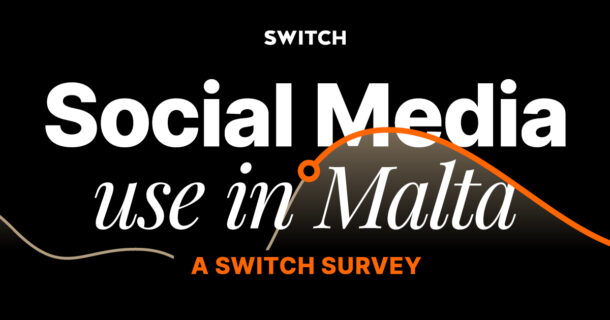On the global scale, Malta is only a blip.
Most studies on social media usage and metrics tend to look at audiences present in much bigger countries, and some of those results can be difficult to apply to Maltese businesses, Maltese consumers, and Maltese behaviours. With the benefit of a much broader range of responses behind them, global studies predict behaviours that might take a longer time to get to Malta – and in this, the studies that we can use to predict local behaviour are limited.
There’s a way around it, of course.
You can create your own survey.
Here’s one we prepared earlier, and what it means for your business.
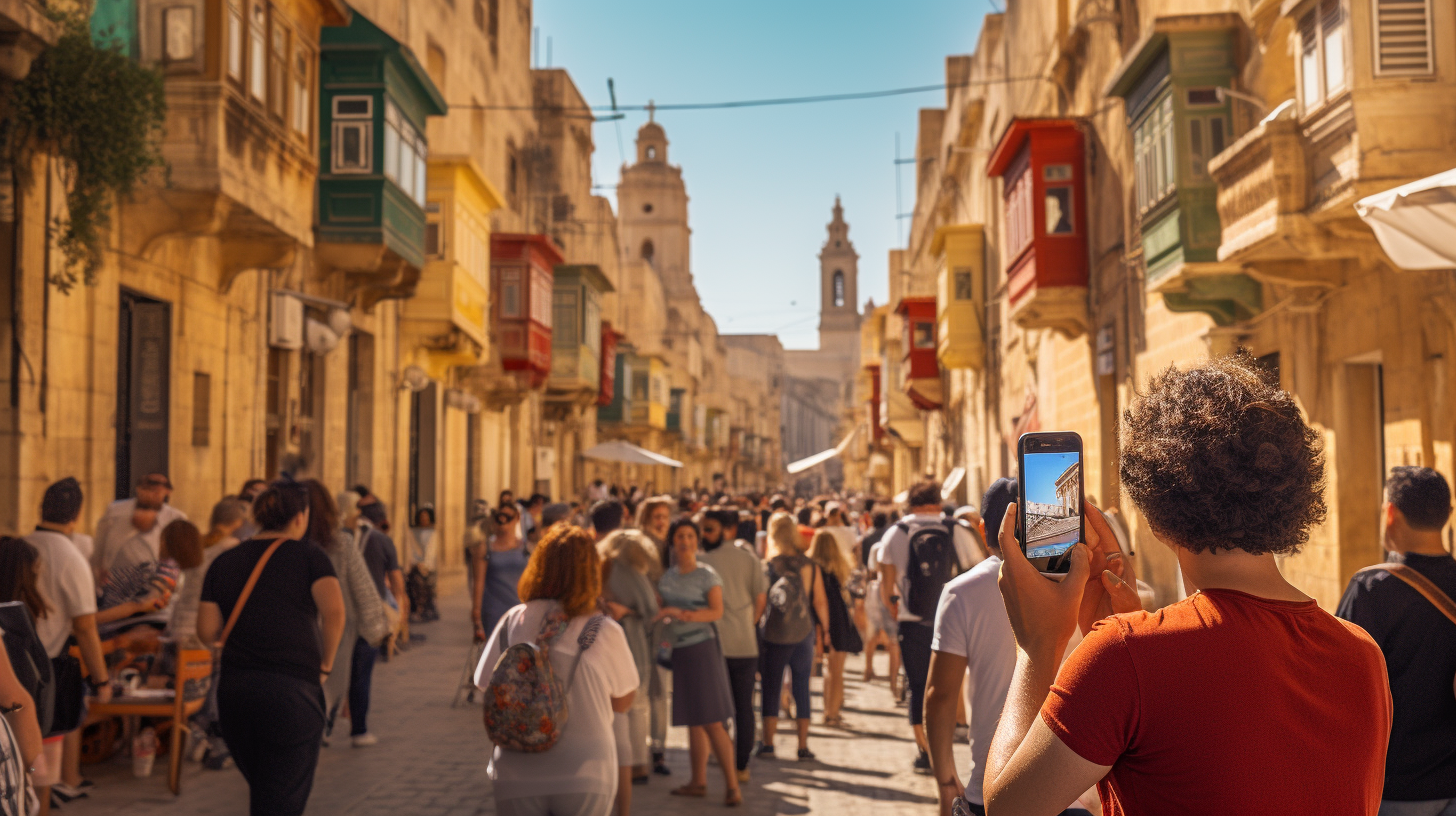
The survey
Our aim was to understand how consumers use social media.
Social media plays an important role in businesses around the world: it’s become a significantly important e-commerce platform, brand building tool, and a communication method between businesses and consumers. It’s also become an early way to predict what’s going to happen in the future.
People talk. Those conversations happen everywhere, but a lot of them happen online, and those online conversations are how we can tell what’s going to happen to businesses in the future, what trends will emerge as the year closes out and a new one begins, and how to work within what the early signs are telling you.
For this survey, we had an additional aim: to produce a report that would highlight Malta’s unique perspective on social media. As a small island, finding statistics that apply to us specifically can be a struggle.
So we ran a survey, and collected answers through Facebook.
Now, we have our own report to look at.
Here’s what we found out.

Less than 40% of 13- to 17-year-olds use Facebook multiple times a day.
Ages 25 – 34 use Facebook most frequently, with 27.5% checking Facebook multiple times a day, followed by 35 – 44 at 20.83%.
| 13 – 17 | 18 – 24 | 25 – 34 | 35 – 44 | 45 – 54 | 55 – 64 | |
| Multiple times a day | 37 | 46 | 132 | 100 | 39 | 2 |
| Occasionally | 13 | 8 | 1 | 1 | 2 | 0 |
| Once a day | 19 | 21 | 11 | 3 | 1 | 0 |
| Once every few days | 21 | 7 | 1 | 2 | 0 | 0 |
| Never | 4 | 3 | 5 | 1 | 0 | 0 |
| Total | 94 | 85 | 150 | 107 | 42 | 2 |
Facebook has a 93.1% penetration rate in Malta. This means that mostly everyone uses Facebook, and more than that: they use it to find out what their favourite businesses are doing, and they use it often.
Except if they’re younger. If they’re younger, Facebook usage in that age group is down. For 13-17 year olds, the most popular platforms to use constantly are Instagram (74.4%), Tiktok (69.2%), and Youtube (44.7%).
What does this mean for your business?
If you’re not catering to this audience, not a lot – you can go ahead and keep doing what you’re doing if all you’re interested in is short-term sales.
However, if you’re looking to build your brand, this is a statistic you want to keep an eye on. Facebook might be serving you well right now to attract consumers with the disposable cash to make purchasing decisions, but omitting the importance of the 13-17 age group is a mistake: they’re going to come into their own money eventually, and it’ll be a lot harder to build a connection with clients who don’t know you from their formative years. While it isn’t impossible, nostalgia is a huge connecting point for consumers – and it’s one you need to keep in mind.
What should you do about it?
Start working on brand representation on other platforms as quickly as you can. This audience in particular needs time and dedication to address correctly – but they’re an audience with a high pay-off when you give them enough time to come to terms with who you are as a brand.

7/10 13 – 17 year olds use Tiktok multiple times a day.
| 13 – 17 | 18 – 24 | 25 – 34 | 35 – 44 | 45 – 54 | 55 – 64 | |
| Multiple times a day | 65 | 43 | 37 | 14 | 6 | |
| Occasionally | 3 | 9 | 34 | 19 | 7 | |
| Once a day | 8 | 13 | 19 | 15 | 5 | |
| Once every few days | 6 | 5 | 15 | 14 | 6 | |
| Never | 12 | 15 | 45 | 45 | 18 | 2 |
Tiktok’s hold on the younger generation is well-documented – and Malta hasn’t escaped the wave of Gen Z turning to Tiktok as their primary social media platform, but it goes beyond using Tiktok as a social media platform. From search engine to communication device to source of entertainment, Tiktok’s tiny communities have created real-world consequences for brands: Vaseline has become synonymous with good skincare, makeup brands are struggling to keep ‘Tiktok famous’ products in stock, and companies can build their reputation overnight with one well-memed video.
What does this mean for your business?
It depends on how early you want to start building up your audience. For most brands, 13-17 is a segment of audience that has limited access to funds that will allow them to purchase your products, and therefore if your business objective is purely to turn a profit, creating a Tiktok profile might not be something that meets that business objective. However, building a brand connection to a younger generation is not necessarily a waste of your time: on the other hand, if that connection has already been put into place before the audience is ready to purchase, you’ll find that the nostalgia factor can prove useful in the long term.
What should you do about it?
Creating a Tiktok account is not going to waste your time – but if you’re not ready to take that plunge, then you can look into the current trends on Tiktok instead, or consider Tiktok as another marketing platform to take advantage of. There are influencers who will market your products to their audiences, and it’s worth looking into if you’re interested in using Tiktok, but not quite ready to add another social media platform to your list.

⅔ of consumers trust brands more than influencers.
How likely are you to trust communication about a brand/service from the brand itself?
| 13 – 17 | 18 – 24 | 25 – 34 | 35 – 44 | 45 – 54 | 55 – 64 | |
| Very likely | 27 | 17 | 54 | 30 | 14 | 0 |
| Likely | 36 | 39 | 56 | 49 | 23 | 2 |
| Neutral | 23 | 26 | 30 | 25 | 5 | 0 |
| Unlikely | 6 | 2 | 9 | 1 | 0 | 0 |
| Very Unlikely | 2 | 1 | 1 | 2 | 0 | 0 |
Influencers were – and still are – a brand staple for a number of reasons: brands tend to struggle to communicate on a human level with consumers, and influencers put a relatable human face on a brand in a way that is difficult to emulate when it’s a corporation speaking. However, influencer burnout is real – and while megainfluencers have already felt the pinch in bigger markets, in Malta it’s only just started to take hold.
Part of this is because Malta is a smaller country, and so we have far fewer influencers to use. Anyone who has reached the point where they are a recognisable face might already have become old news according to consumers, and consumers who have a specific dislike for that influencer may be repelled away from the brand that aligns itself to them.
What does this mean for your business?
If you’re already investing in influencer marketing, you need to take a look at who you’re using. If you have a tendency to choose the same influencers for your campaigns, it might be worth revisiting if those influencers are the right ones to align with your brand.
What should you do about it?
Influencer marketing can be effective, so you need to figure out how it’s going to be effective for you. Take a look at your audience: who’s most likely to resonate with them? Is the big-name influencer with a dedicated following that’s been in business for years, or would they relish seeing a fresh face on the scene, someone with a smaller audience but a lot more authenticity? This will depend between brands: there’s no one correct answer for everything, and it’ll depend a lot on the areas you’ve grown your audiences in. Younger audiences might prefer someone their own age; older generations might prefer someone that looks like them or a familiar face from their childhood. To find out, you need to go back to your brand.

People who prefer watching short-form videos cite Instagram Reels and Tiktoks as their top choices twice as often as Youtube Shorts
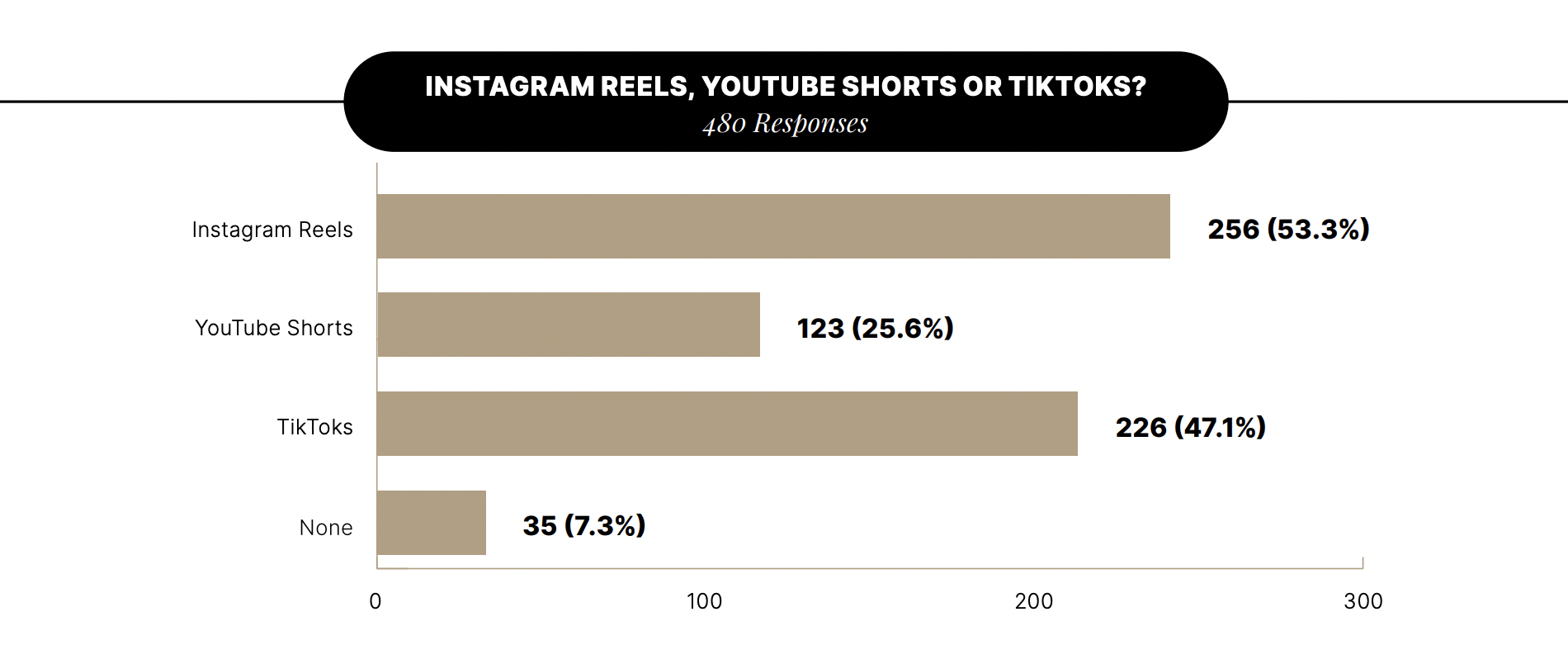
Although Youtube has a decent user-base as a platform, its short-form video content hasn’t quite picked up to the same extent as Tiktoks and Instagram reels. Only 25.6% of consumers mention using Youtube Shorts, which can still be a usable audience segment, however it’s worth pointing out that the lower figures may be difficult to overcome given Youtube’s position as a social media platform. Youtube is well known for its longform videos, but Instagram and Tiktok have already claimed a significant share of the short-form audience, and so Shorts can take longer to pay off at the same rate of success.
What does this mean for your business?
If you want your content to stand out, creating material for Youtube Shorts is definitely an option, especially if you’re already in the habit of creating short-form video content already.
What should you do about it?
Take a look at your content.
Chances are, there’s some content that will serve better as shortform video, and that’s the content that you should consider putting up on Youtube shorts. Content that tends to speak to Youtube’s core nature – crafting, cooking, organising, tech: all those physical, handy things – might tend to do a little better than Instagram reels, which focus on beautiful aesthetics, or Tiktoks, which can tend to cycle through trends faster than other platforms. For content that’s meant to stay online for longer, content that’s explanatory, content that you can turn into a longform video, you might want to try Youtube Shorts.

Over 50% of surveyed say that brand behaviour affects their purchase decisions.
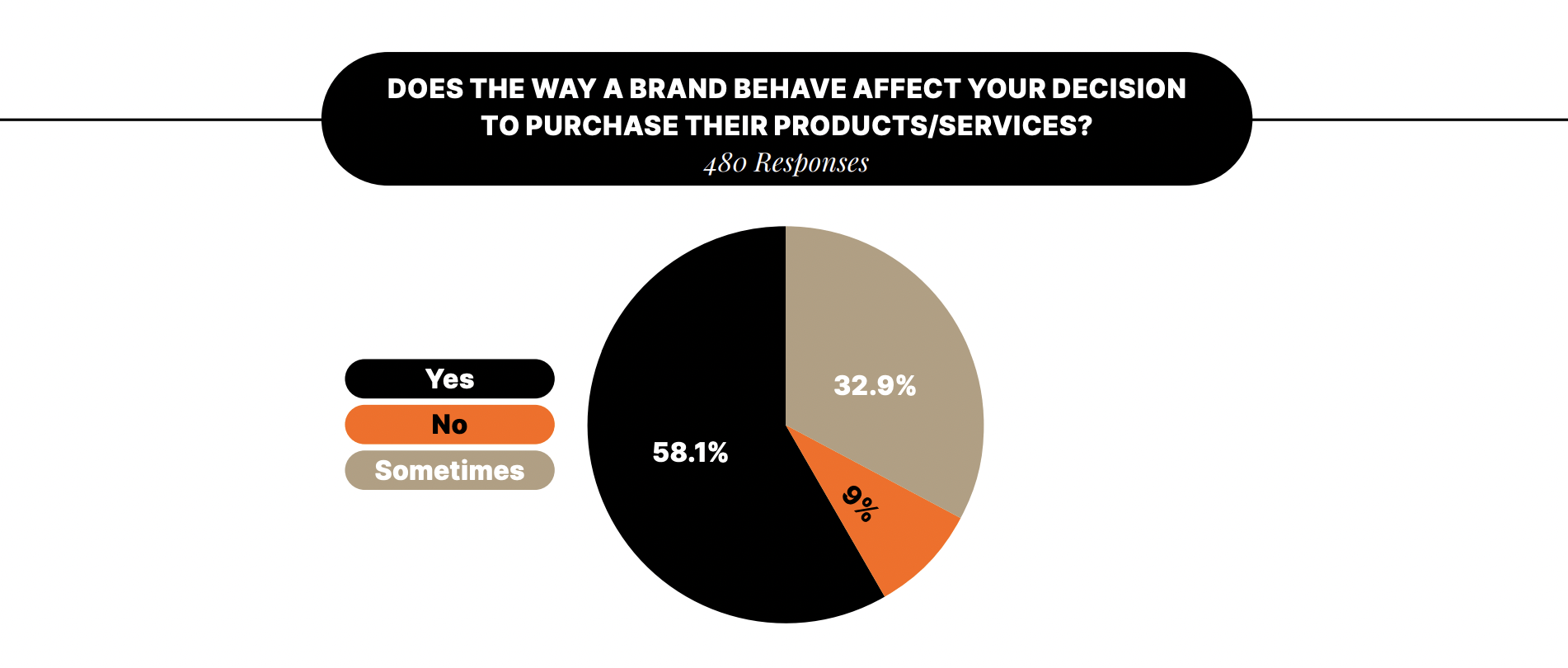
What you do matters, and this is not new information. Consumers don’t like to support brands that go against their values, and they certainly know that their purchases will make a difference; annoy enough consumers, and your bottom line will suffer.
That said, you won’t be able to please everyone. This is where you, as a brand, need to decide where your loyalties lie, and how best to meet those loyalties – but regardless of what position you choose, this doesn’t change the fact that the way you act matters to your consumers.
What does this mean for your business?
Your brand is more than just the products it sells. It’s how it talks to its consumers. It’s what it supports as a movement. It’s how it addresses complaints. If these are aspects of your business that you’ve either neglected or have simply just not paid enough attention to, it’s time to start – and to make a public effort to showcase what your brand stands for.
What should you do about it?
All of this goes back to brand. Do you know what your brand stands for? Is it something you can put into words? Remember: you can’t please everyone. Your brand is going to behave in ways that will annoy some people, and will please others, and the only thing you can do is decide which side of the conversation you’re going to stand on. This is one thing you can’t avoid: trying to please everyone means you won’t please anyone. Pick your side.

3 out of 4 people would spend a little more if the brand acted responsibly.
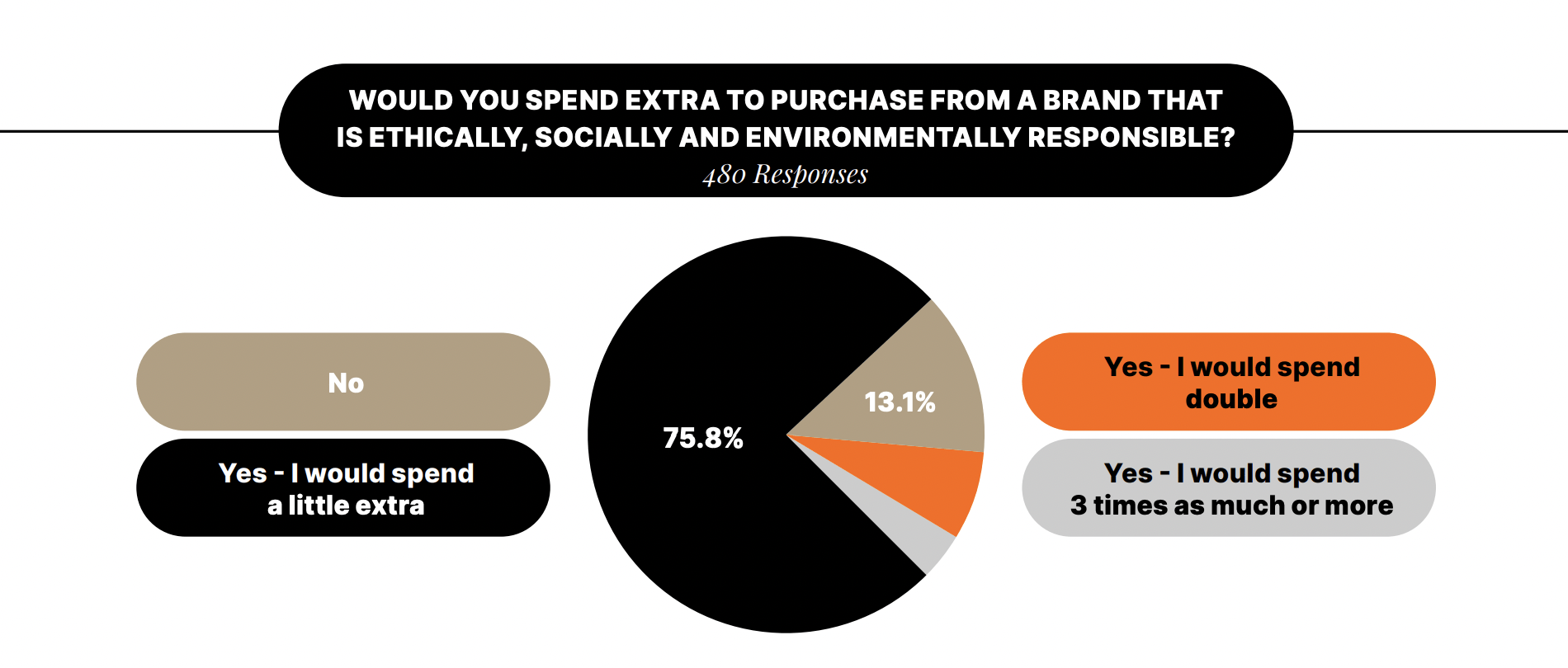
This goes hand in hand with brand behaviour, but it bears a unique perspective in Malta. Maltese consumers are used to irresponsible behaviour – just hop onto any Facebook page and see how they react to the latest construction news – and while it’s true that most of those reactions are negative, what they’re reacting to is largely issues that the average Maltese consumer has already expressed dislike for.
Brands acting responsibly, like brands choosing a side, means that they are at the heart of those conversations, and championing causes that people feel strongly about means that they’ll create lasting impressions of their brand.
The monetary pay-off follows naturally then.
What does this mean for your business?
It’s time to take a look at what causes you’re championing – and if you’re championing none of them, it’s time to start thinking about which ones to add. In today’s world, every brand has to stand for something, and yours needs to as well.
What should you do about it?
Find a cause to support. State that support loudly, and with pride. Consumers aren’t stupid – far from it – and the way that you support initiatives will say a lot about who you are as a company, and conversely, the people who choose to purchase your products.
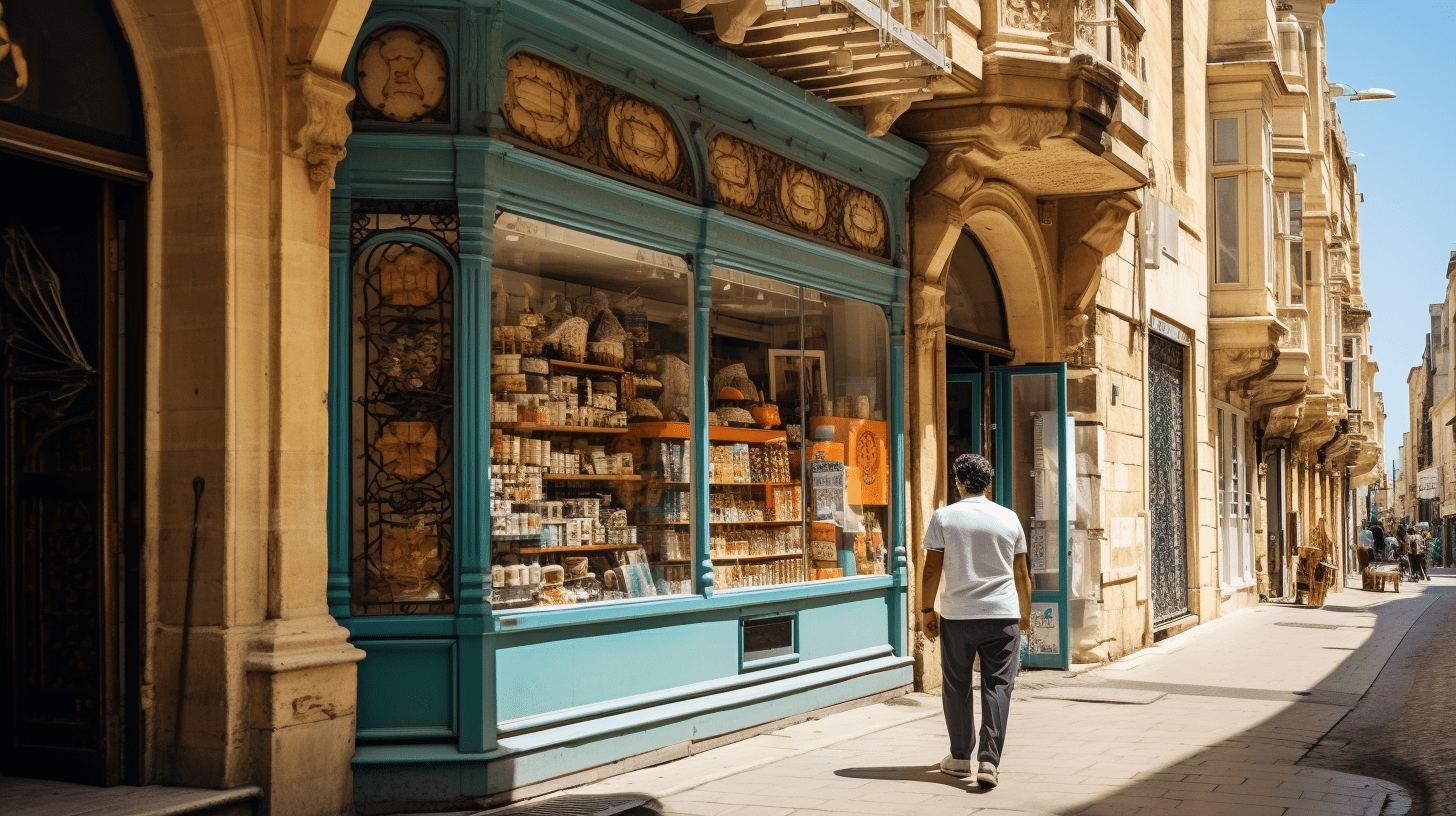
Almost 40% tend to choose a local retailer over a global brand.
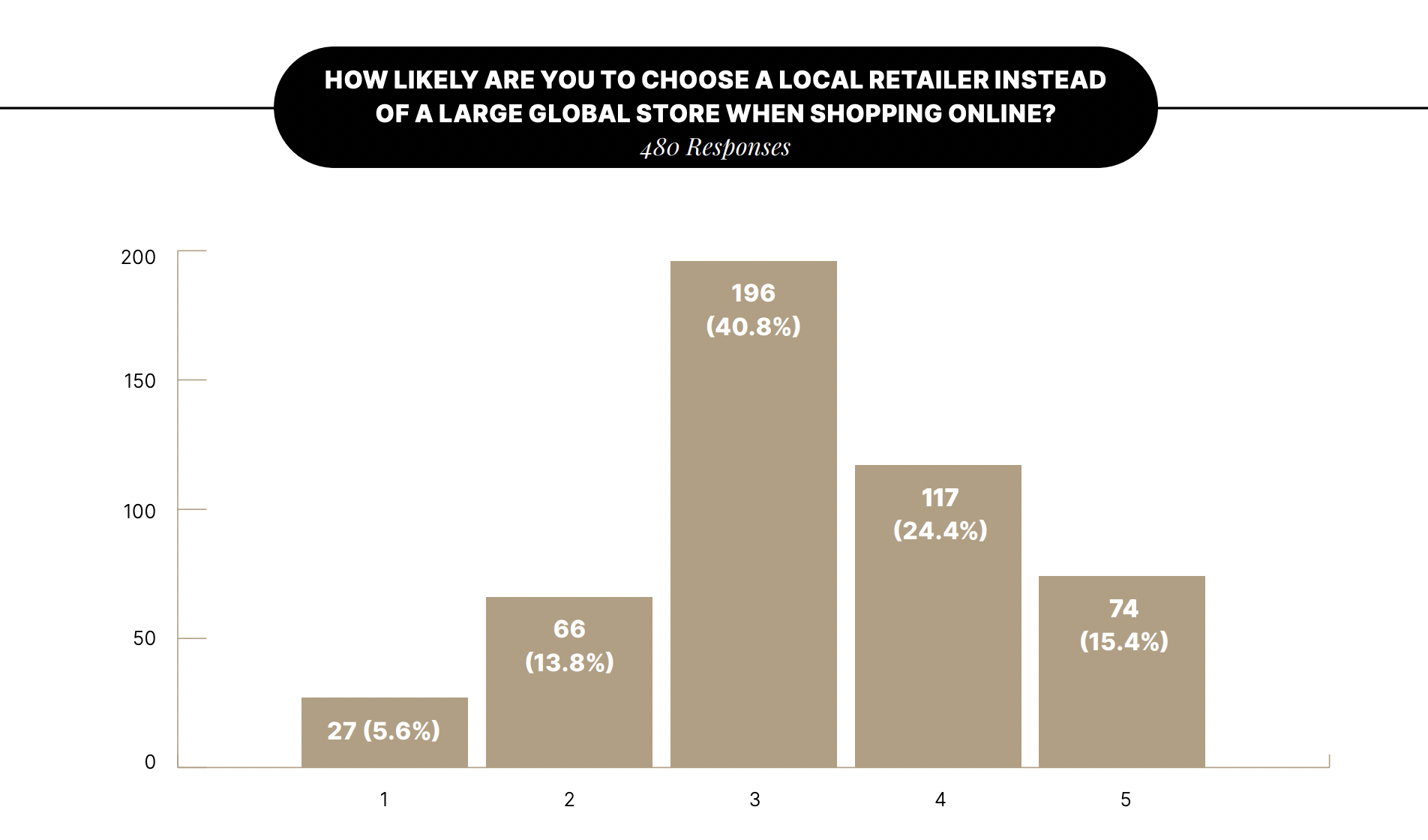
There’s one great thing about local retailers: the shipping.
The global shipping industry has been through a couple of rough years – and while it’s starting to ease back into pre-COVID functionality, we’re still a long way off from regaining the same levels as before, and so it’s not surprising that consumers are mindful of where they’re shopping from. Add to that the steep prices that Maltese consumers often have to pay for shipping, and the fact that not every website ships to the island, and the popularity of local retailers makes sense.
What does this mean for your business?
If there’s a retail aspect to your business, you need to look at how it works. If your biggest competitors on the island are local businesses, that could mean revamping the way that you advertise, the way that you use your e-commerce, the way that you communicate. Local stores can have a big advantage over much larger global storefronts, so it’s important to see where, and what, you can do to make the most of your local consumers.
What should you do about it?
If you’re struggling to make an impact with local consumers, it might be time to look at what you’re doing to connect with them. Do you post on social media only and leave it at that, or do you also do events? How do people buy your products? If you have repeat consumers, what keeps them coming back?
Most importantly: do you offer any benefit to your customers that makes you a more appealing option than the bigger stores available online? If you can’t compete on variety, then can you compete on shipping? Once you have those answers, you can start recreating the way your brand exists to locals.

Every third person follows a brand because of their value alignment within the brand.
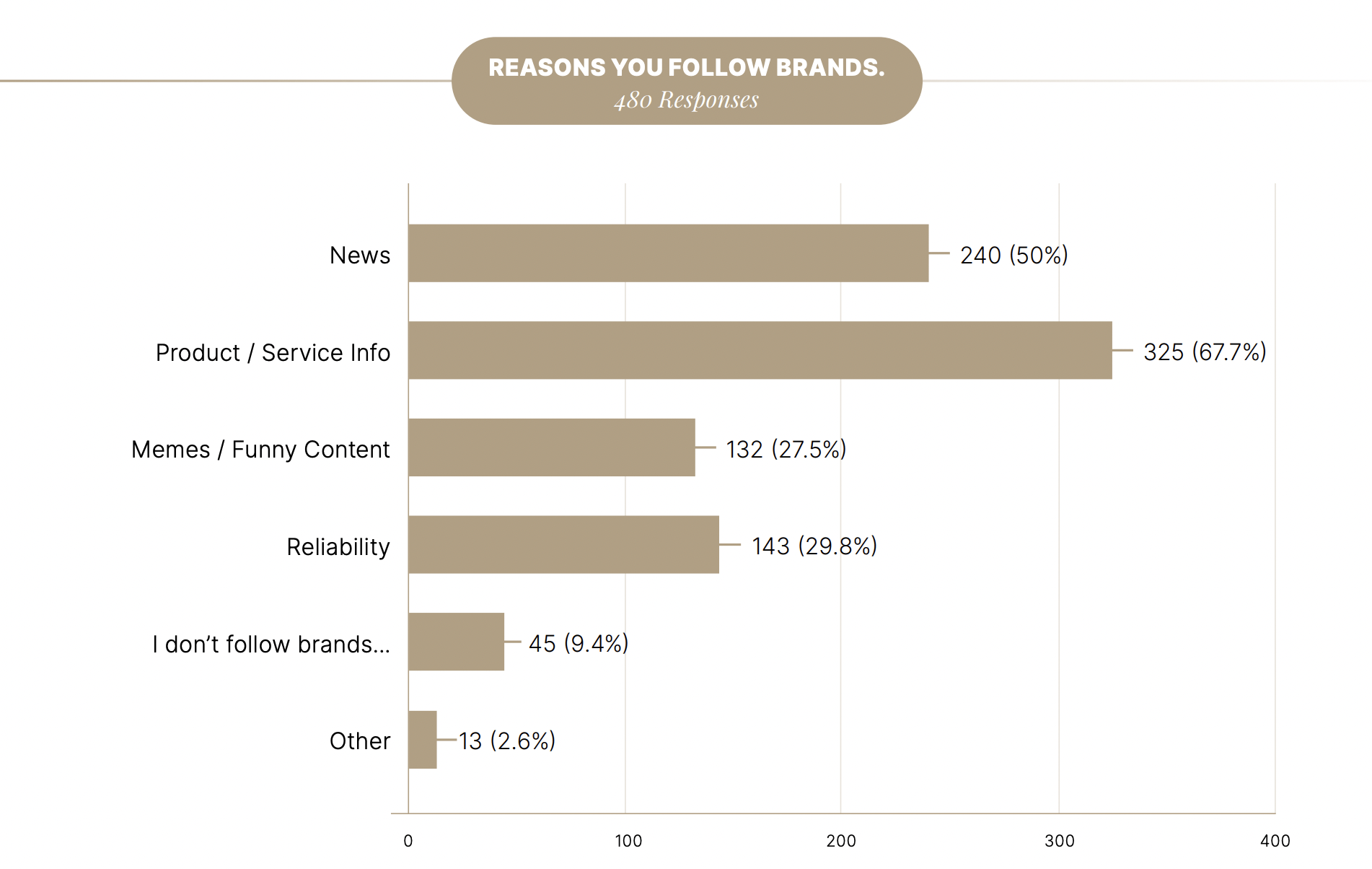
This isn’t new information, but people tend to use the brands they support as a larger extension of their own personality, ideals, and character, and so they seek out brands that will align with them on values. This is especially true for younger audiences, and only grows more significant as brands continue to communicate on social media.
What does this mean for your business?
Similar to championing a cause, this means you need to know your business well enough to understand why consumers follow you, and why they pick your products over any other. There is a reason why your primary consumers are drawn to you, and understanding that reason is the first step to helping your business grow bigger and better.
What should you do about it?
Take a look at your brand values. Are they still values that you agree with?
If your brand has changed in the intervening years, and you no longer feel as though your brand values represent the brand, it might be time for a change. Whatever adjustment you do make, though, remember this: consumers pick the brands they like for a number of reasons, and it’s not all based on price. Making your brand values clear to your consumers can surprise you.
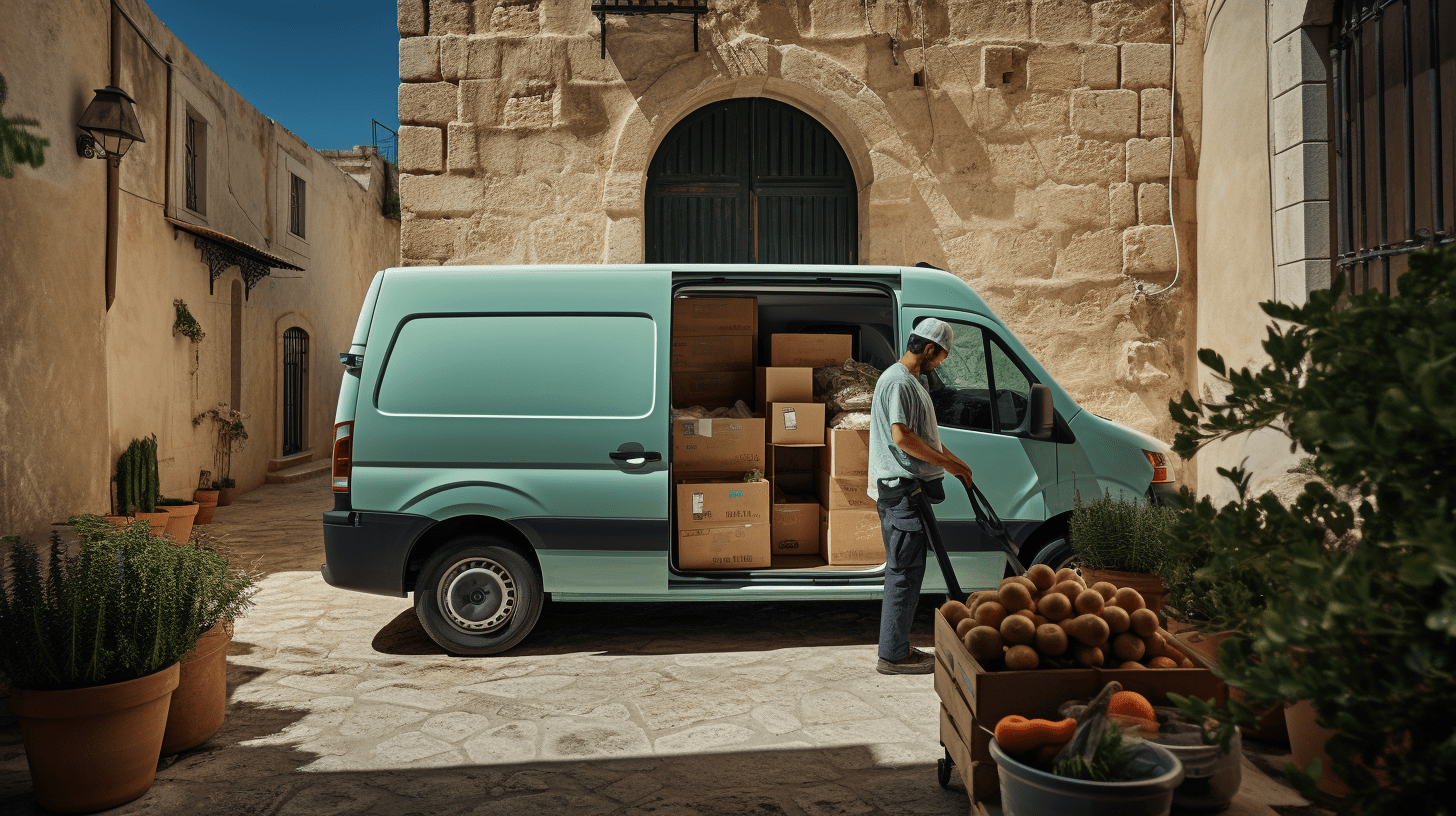
34% of all interviewed shop both online and in-store.
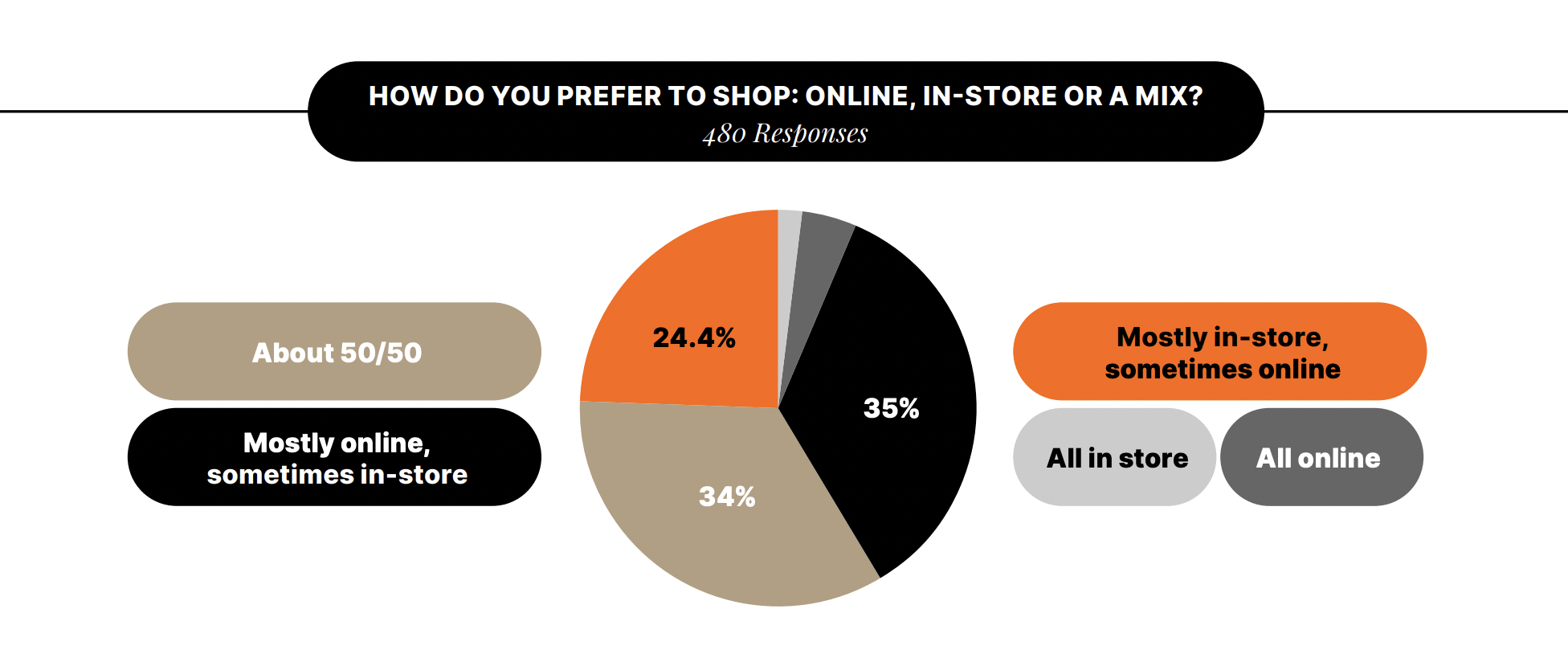
We’re a small island. It’s understandable that online shopping is part and parcel of living on that small island: sometimes, the brands that we do want to use don’t come to local stores, or we’re looking for something that no retailer in Malta carries.
What’s interesting to note is that there doesn’t seem to be a big preference for one or the other among the younger generation, the split between shopping online and shopping in-store is about 50/50, and that tapers off as you go up in the age-groups.
However: the older generation has a tendency to prefer online shopping above shopping in-store, with almost 42% of 35 – 44 year old respondents preferring to shop mostly online.
What does this mean for your business?
It doesn’t mean shut down your e-commerce store, but it does suggest that e-commerce is only a small part of the main driver behind which brands local consumers tend to pick. If you’re putting a lot of effort into your online store, but neglecting other aspects of your brand, it might be time to put some of that effort in other areas.
What should you do about it?
Convenience is still a very important factor to keep in mind, but it can take a lot more forms than just allowing for online purchasing. See if there’s pain points in your business that’s driving people away from purchasing from your brands: you might be surprised at what you find.

95% of all interviewed are interested in giveaways/competitions if they like the brand.
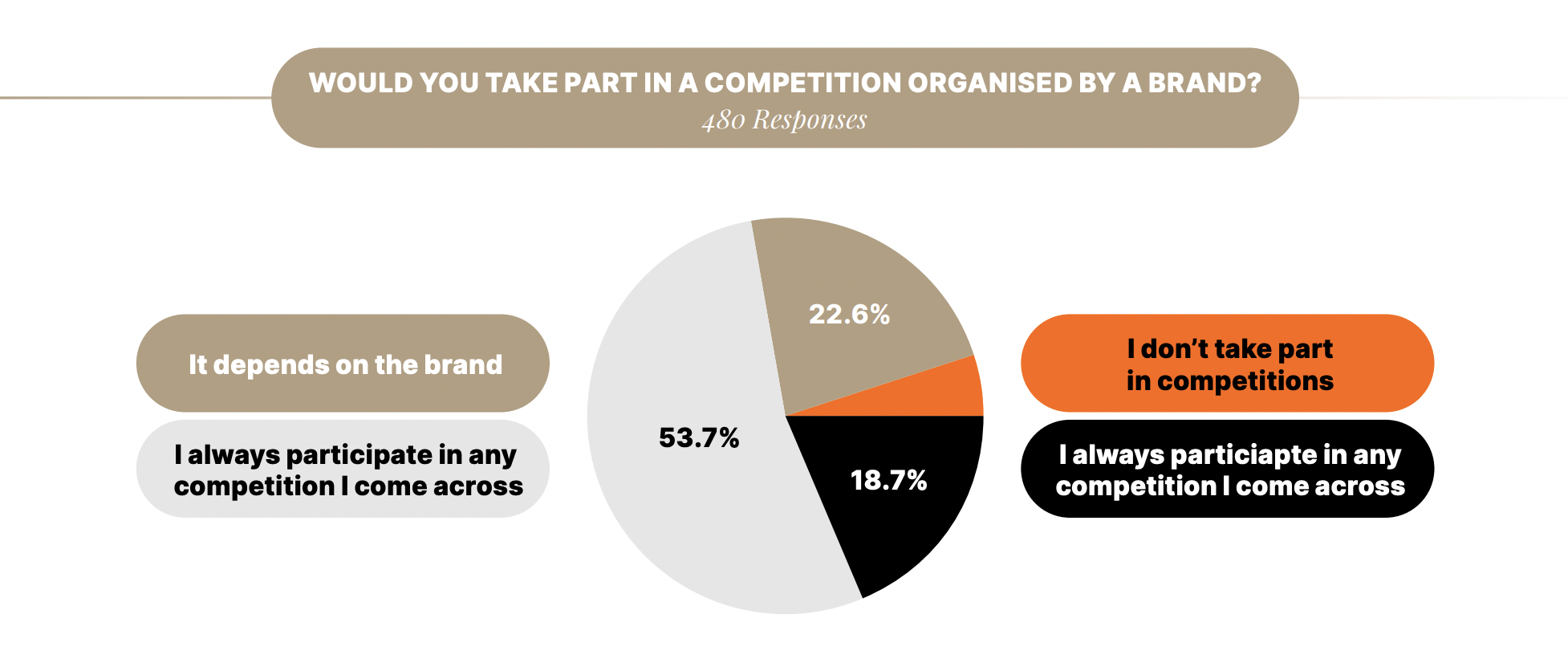
Say you want to drum up support for an initiative. What kind of prize do you offer?
Overwhelmingly, the answer seems to be this: something that’s related to your own brand, merchandise that they either can’t get through a normal store, or something that’s created specifically for this contest. It’s interesting because brand merchandise has become a status symbol in its own right – we all remember LIDL bringing out its own range of clothing, and how quickly it all sold out.
What does this mean for your business?
If you’re in the habit of running giveaways, your brand is your biggest asset, and creating products that showcase your own brand is more likely to get you responses that provide some meaningful interactions.
What should you do about it?
Brand merchandise. Your brand is followed for a reason, and humans are collectors of the things that they like: give them something to collect.

Why should I know all this?
Whether you’re a local business or not, it highlights a microcosm of the world. Consumer demand changes, and it changes rapidly.
Brands need to be able to pivot to keep up with what’s going on: this means understanding your values, understanding your brand, and understanding how the combination you work with can influence the audiences you connect with.
It also means that you need to keep a regular eye on the way that your brand is, and anticipate how it’ll need to change.
And your brand will need to change.
The world is getting confusing. Brands need to make their voices heard, but this way forward is pitted with places where they can stumble.
Understanding your audience is part of the way forward.
And if you need help figuring out how, we’re always happy to lend a hand.




